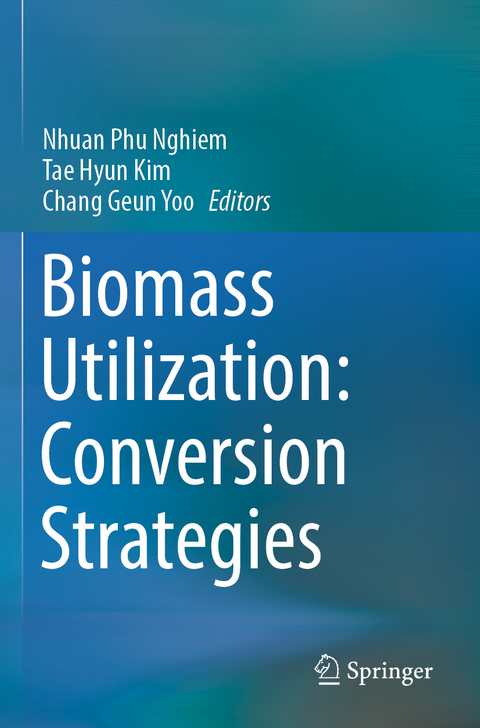
Biomass Utilization: Conversion Strategies
Springer International Publishing (Verlag)
978-3-031-05837-0 (ISBN)
The early attempts to produce fuel ethanol from lignocellulosic biomass feedstock focused solely on the biological conversion of cellulose because the only organism that had been used successfully for commercial production of ethanol, i.e. Saccharomyces cerevisiae, could only ferment glucose, which was obtained from the hydrolysis of cellulose. Hemicellulose and lignin were considered as wastes in these processes and were normally removed in pretreatment processes to enhance enzymatic hydrolysis of the remaining cellulose.
However, this approach was not economically feasible and as a result, the biorefinery concept was developed. In a biorefinery, in addition to ethanol, various higher-value products are produced from hemicellulose and lignin, which were previously not considered. Consequently, technologies were developed for the fractionation of biomass and conversion of hemicellulose and lignin to fuels and high-value products to improve the economic feasibility.
Written and edited by a team of investigators with many years of experience in biomass processing research and development, this book is an informative resource for postgraduate students and researchers interested in biorefinery and biofuel technologies both in academia- and commercial laboratories.
lt;p>Dr. Nhuan Phu Nghiem received a PhD in Chemical Engineering from Louisiana State University. He is a retired Lead Scientist with the Eastern Regional Research Center, USDA ARS. He has been an Adjunct Professor in the Department of Environmental Engineering and Earth Sciences at Clemson University for more than 15 years. He has 40 years of experience in industry and government on bioprocess R&D including biomass processing, biorefining and biofuels/biobased products.
Dr. Tae Hyun Kim received a PhD in Chemical Engineering from Auburn University. He is currently a Professor in the Department of Materials Science & Chemical Engineering at Hanyang University ERICA. He was formerly a faculty at Iowa State University and Kongju National University. He has more than 20 years of experience in teaching and research in lignocellulosic biomass processing and conversion.Dr. Chang Geun Yoo received a PhD in Agricultural and Biosystems Engineering from Iowa State University and currently is an Assistant Professor in the Department of Chemical Engineering at State University of New York College of Environmental Science & Forestry. He has investigated biomass characterization and utilization strategies with 70+ journal articles and book chapters on biomass characterization, pretreatment, thermochemical/ biological conversion, and biorefining.
Chapter 1. Introduction.- Chapter 2. Fractionation strategies.- Chapter 3. Biochemical conversion of cellulose.- Chapter 4. Biochemical conversion of hemicellulose.- Chapter 5. Biochemical conversion of lignin.- Chapter 6. Thermochemical conversion of cellulose and hemicellulose.- Chapter 7. Thermochemical conversion of lignin.- Chapter 8. Material application of lignin.- Chapter 9. TEA for evaluating biorefinery strategies.
| Erscheinungsdatum | 23.08.2023 |
|---|---|
| Zusatzinfo | IX, 245 p. 43 illus., 19 illus. in color. |
| Verlagsort | Cham |
| Sprache | englisch |
| Maße | 155 x 235 mm |
| Gewicht | 396 g |
| Themenwelt | Naturwissenschaften ► Biologie ► Biochemie |
| Schlagworte | biofuel • Biomass utulization • Biorefinery • Cellulose • conversion technologies • Hemicellulose • High-value products • Lignin • Lignocellulose |
| ISBN-10 | 3-031-05837-2 / 3031058372 |
| ISBN-13 | 978-3-031-05837-0 / 9783031058370 |
| Zustand | Neuware |
| Haben Sie eine Frage zum Produkt? |
aus dem Bereich


